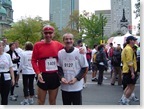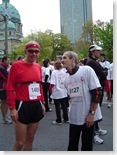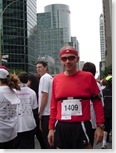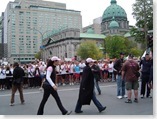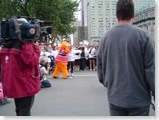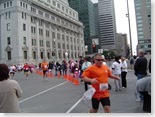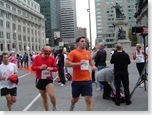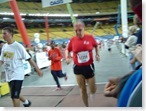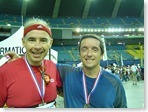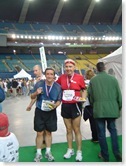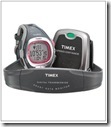| I hope that some of you started fitness more than six months ago. If so, you might be interested to introduce some jogging into your daily activity. About a year after I started my weight lose program, I started to jog occasionally. Then, I felt that I needed some more speed. If you are like that, the following program is for you. If not, continue with you current program until you achieve your goals. WARNING:If you have heart related problems or you just think you might have them, consult a qualified physician before you change a program. |
Program for advanced walkers/joggers
| Day | Intensity |
| Monday | (day off) |
| Tuesday (short day) | Warm up for 5 to 10 minutes; 30min @ 50-70% MaxHR (alternate 5 min walk/ 1 min light jog)* ; slow down for 5 minutes. Light stretching. |
| Wednesday (short day) | (same as Tuesday) |
| Thursday (long day) | Warm up for 5 to 10 minutes; 60 min @ 50-70% MaxHR; slow down for 5 minutes. Light stretching. |
| Friday (short day) | (same as Tuesday) |
| Saturday (long easy day) | Warm up for 5 to 10 minutes; 30 min @ 50-70% MaxHR; 30-60 additional minutes @ 50-60% MaxHR; slow down for 5 minutes. Light stretching. |
| Sunday (long day) | (same as Thursday) |
| *Every four weeks, you can increase light jog by 1 min until you walk for 5 minutes and jog for the same amount of time. Your total workout time shouldn't change (max 30 min). Only the number of intervals will change. BTW, this will increase the amount of calories burned, and if your goal is a weight loss, this will help you to get rid off the pounds a little bit faster. |
